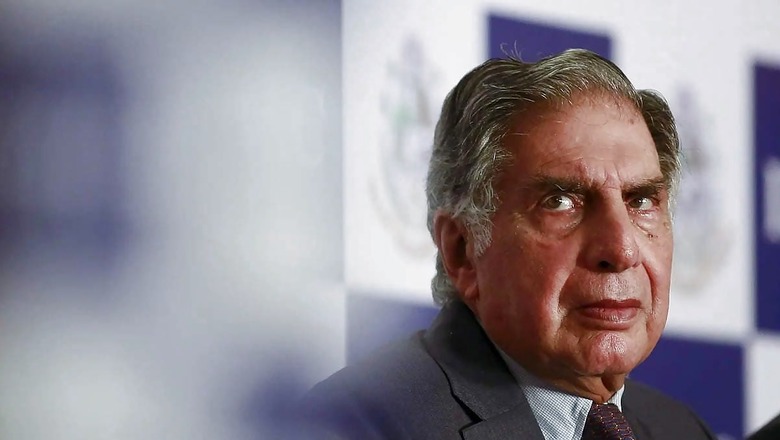
views
The story of Air India is not just about an airline; it’s about a significant chapter in Indian aviation history. The return of Air India to the Tata Group symbolises a reconnection with its roots, and many hope it will lead to a renaissance in the Indian aviation sector, combining Tata’s operational expertise with the airline’s storied past.
Air India’s journey began in 1932 as Tata Airlines, a subsidiary of Tata Sons, founded by the visionary J.R.D. Tata.
J.R.D. Tata, also known as Jehangir Ratanji Dadabhoy Tata, was the uncle of Ratan Tata. J.R.D. Tata was a pioneering industrialist and the former chairman of Tata Sons, playing a crucial role in establishing and expanding the Tata Group.
Ratan Tata, the son of J.R.D. Tata’s cousin Naval Tata, succeeded J.R.D. Tata was chairman of Tata Sons in 1991 and served in that role until his retirement in 2012.
To connect India’s remote regions, the airline started with a single De Havilland Puss Moth aircraft. Over the years, Tata Airlines expanded its operations, eventually becoming a national carrier and rebranded as Air India in 1946.
Government Takeover of Air India
In 1953, the union government nationalised Air India, marking the beginning of a long period of government ownership. The government acquired a 49% stake in Air India, which later led to complete nationalisation.
Despite facing various challenges, Air India became a symbol of India’s growing global presence. Its iconic Maharaja mascot and distinctive livery were recognized worldwide.
The Road to Return
However, Air India’s financial health deteriorated over the years, burdened by legacy issues, inefficient operations, and a mounting debt. The Indian government’s efforts to privatise the airline were unsuccessful for many years due to political hurdles and resistance from unions.
2001: Tata Group Expresses Interest in Air India
Proposal: Tata Group, in partnership with Singapore Airlines, bids to acquire a stake in Air India, but the bid is unsuccessful.
2013: Tata Group Re-enters Aviation
Joint Ventures: Tata Group partners with AirAsia Berhad and Singapore Airlines to enter the Indian aviation market.
AirAsia India: Launched as a low-cost carrier.
Vistara: Launched as a full-service airline in partnership with Singapore Airlines.
A New Dawn
2017: The government announced plans to disinvest its stake in Air India. This marked the beginning of a new chapter for the airline, as it sought potential buyers.
2020: Tata Group Bids for Air India
Bidding: Tata Group submits a bid to acquire Air India, including its low-cost subsidiary, Air India Express.
October 2021: Tata Group Acquires Air India
2021: After a long bidding process, the Tata Group won the bid to acquire Air India, marking the airline’s return to its founders. The government sold its 100% stake in Air India to the Tatas for ₹18,000 crore.
After 69 years as a government-owned enterprise, Air India and Air India Express were welcomed back into the Tata group in January 2022.
The acquisition was finalised, and Air India once again became a Tata-owned entity. The group announced plans to invest significantly in modernising the fleet and enhancing service quality.
Air India Express: Tata also gained the authority to operate Air India Express, a fully owned low-cost subsidiary of Air India.
Consolidation: Tata Group begins the process of consolidating its airline companies under the Air India brand.
November 2022: AirAsia India Fully Acquired by Tata Group
Acquisition: Tata Sons acquires the remaining 16.33% stake in AirAsia India from AirAsia Berhad, making it a fully-owned subsidiary.
Merger Plans: Plans to merge AirAsia India with Air India Express to streamline operations.
November 2023: Vistara Merger with Air India Announced
May 2024: With the Air India-Vistara merger in progress, the assessment of over 7,000 employees is completed.
August 2024: Govt Approves Singapore Airlines’ Investment
This marked a significant milestone for the airline and the Tata Group, bringing the iconic carrier full circle. The Tata Group’s acquisition of Air India was seen as a strategic move to strengthen its presence in the aviation sector and leverage its expertise in managing large-scale businesses.
The return of Air India to the Tata Group is a testament to J.R.D. Tata’s vision and the enduring legacy of the Tata Group. It marks the beginning of a new chapter for the airline, one that promises to be filled with innovation, growth, and a renewed sense of pride.
The Tata Group aims to revive Air India to its former glory, leveraging its legacy of excellence in service and management. Plans for fleet upgrades, expanding routes, and integrating Air India with other Tata aviation ventures are in the pipeline.
Ratan Tata Passes Away At 86
Veteran industrialist and Tata Sons Chairman Emeritus Ratan Tata died at the age of 86 late on Wednesday. He was admitted to Mumbai’s Breach Candy Hospital since Monday due to a sudden drop in blood pressure and was in critical condition in the intensive care unit.
In his official statement, Tata Sons chairman N Chandrasekaran said Ratan Tata was a “truly uncommon leader whose immeasurable contributions have shaped not only the Tata Group but also the very fabric of our nation”. He said Tata was more than a chairperson for the Tata Group, and was a “mentor, guide and friend” to him.

















Comments
0 comment